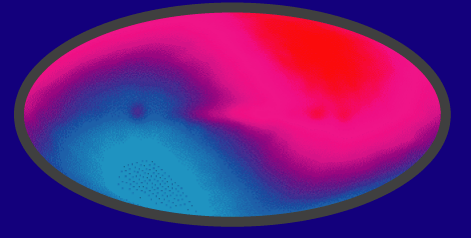
If we turn up the contrast on the previous map to see fluctuations at the level of one part in 1000, the COBE sky map looks like this:

Aside from some deviations about the equator, this pattern is a pure dipole. A dipole has its maxima and minima (red and blue here) pointed in opposite directions on the sky. This pattern is generated simply because we ourselves are moving with respect to the CMB and its temperature appears redshifted or blueshifted by the Doppler effect.
The map above has the equator placed according to where the galactic disk of the Milky way appears on the sky. Here we begin to see contamination from our own galaxy along the equator.